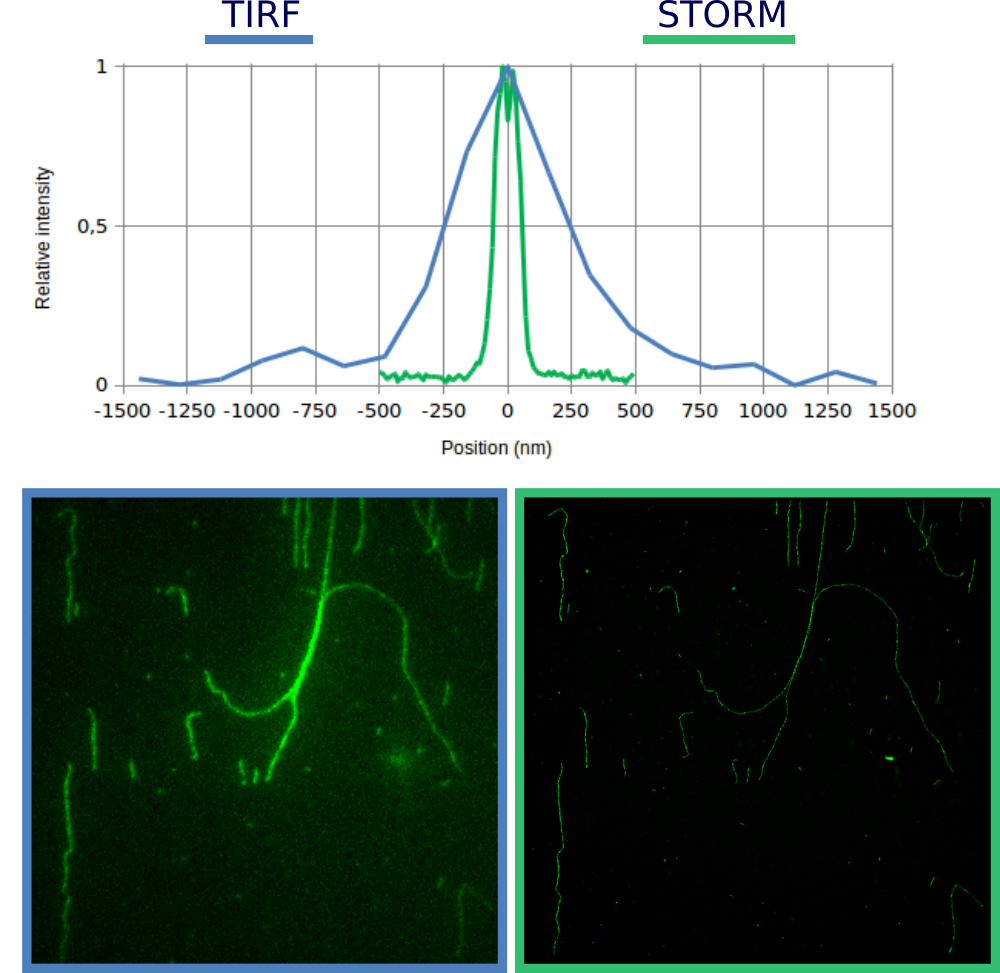STORM
Photo-activated localization microscopy (PALM) and stochastic optical reconstruction microscopy (STORM) are widefield fluorescence microscopy imaging methods that allow obtaining images with a resolution beyond the diffraction limit.
The development of PALM as a targeted biophysical imaging method was largely prompted by the discovery of new species and the engineering of mutants of fluorescent proteins displaying a controllable photochromism, such as photo-activatable GFP. However, the concomitant development of STORM, sharing the same fundamental principle, originally made use of paired cyanine dyes.
PALM and STORM are basically the same technique: One molecule of the pair (called activator), when excited near its absorption maximum, serves to reactivate the other molecule (called reporter) to the fluorescent state. The difference is that one technique was developed by a group using synthetic dyes which can be turned ON, located and then turned OFF several times (STORM), whereas the other was developed by a group using photoactivatable fluorescent proteins which are turned ON, detected and then definitively bleached (PALM).
[Source: Wikipedia]
Comparison of resolution with STORM and TIRF


